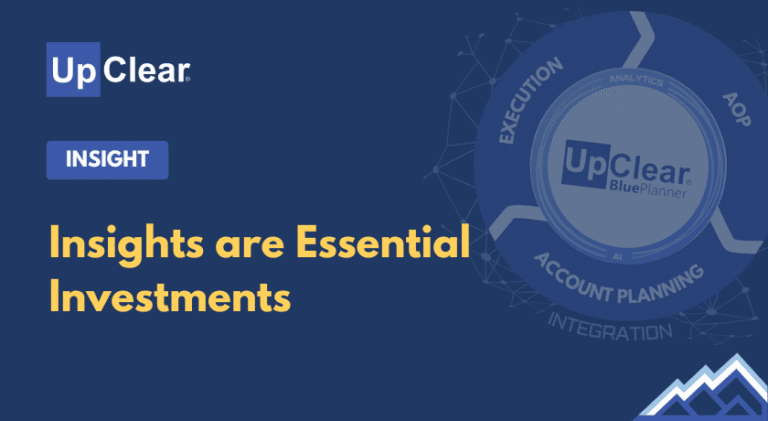


“60% of trade promotions have a negative ROI!” A commonly quoted statistic that is alarming enough for FMCG (CPG) companies even if they have the tools and capability to calculate the “Return on Investment” (ROI) of their trade spend. What about those businesses that cannot, though? Below is a summary of the five building blocks you need to think about when you need to activate this key performance indicator (KPI) in your organization.
If you didn’t promote, how much would you sell to brand loyalists? This is your “base” demand and it is a relevant question for both sales to a distributor (“shipment base”) and for sales from a retailer or wholesaler (“consumption base”). Without knowing this number, you can’t begin to understand how much of your total volume is being driven by trade spend. Said another way, “Return” in the ROI calculation is the profit from the uplift/incremental volume driven by the promotion. If you do not decompose volume between base and uplift, you cannot calculate ROI.
The simplest way to calculate base is to chart your volume over a proceeding period for a customer / SKU combination. For this, weeks is generally better than months, and if the information is available, also overlay base and promoted volume data from a syndicated provider. This will probably give you a spiked line, with the ‘peaks’ corresponding to promotions or known events, such as Christmas, Valentine’s Day, etc.: ignore these and draw a line connecting the ‘valleys’. You should be aiming for a standard deviation (sigma) of +/-3… This is approximately your base. From here all your other calculations can begin.
Most companies exist to make a profit which only three levers can deliver: volume, cost of goods (COGs), and price. Price, particularly on-going pricing, is the least discussed but the most important of the three as it affects everything a business can do with the other two. A 1% increase in price for example delivers straight to the bottom line more than a 1% increase in volume or a 1% decrease in COGs. Essentially, there are four elements to setting and understanding pricing:
Once you have completed these two steps you can begin to understand the Volume on Deal (VOD) element of your sales and the proportion of your spending that is funding it.

When the second biggest line on most FMCGs’ P&L is usually trade spending, understanding what this is spent on is quite important. Only by having a clear pricing model, including “buckets” or categories of promotional spend and the ability to allocate and report investment against these, will you be able to measure ROI. The most basic way to categorize trade is by the way you’re offering it:
If necessary, as a minimum, start simple with a “bucket” for variable spend and one for “fixed” spend. The next step is defining the purpose of the money. Does it support a reduced everyday price (EDLP) a reduced promotion price, advertising, displays, etc. Determine what categories of spending you need to understand your investments.
Retailers do not require a straight 10,000 cases from a supplier one week before a promotion starts. They have warehouses where they may already be sitting on 2,000 cases, plus another 1,000 cases at the back of their stores. For a three-week promotion, they may need to frontload their ordering across a two-week “buying in” period before the deal starts on shelf, then depending on the uplift, require additional stock in weeks one and two, once the activity is running.
Confusing? Yes, and that’s before you start thinking about how the variable spend element of an activity is going to work, especially if the claim for per unit funding is retrospectively submitted by the retailer based on sales-out data (scans). All of this, however, needs to be factored in when trying to calculate the volume sold “on deal” and so the ROI of an activity.
If you’re funding on ‘sales-in’, when do you start applying the promotional discount: order date, ship date, on receipt? For retro funded activity, can the retailer claim only on the volume ordered during the promotion dates, or, as in the case above, also on the 3,000 cases they already had in stock?
Finally, when reconciling the retailer’s claim, so you are not over or under funding, is it accepted at face value or do you align it against retail sales data from a third-party data, like Nielsen or Circana? What if the retailer sends in multiple invoices against one promotion, or conversely combines several promotions onto one invoice? Only by having the ability to correctly allocate these claims, first to the correct promotion, and second to the correct bucket in the P&L, will you be able to determine the ROI.
So, in summary…
It is complicated, particularly as promotion management touches pretty much every department across a business: Marketing or RGM, Sales, Supply Chain, and Accounting/Finance. Understanding your volume drivers and related spend gives you insight into which promotions work and which don’t. This enables you to make decisions and the opportunity to take the appropriate action as a business.
And, yes, you can manage all this in spreadsheets, but there are considerably better ways of doing so …
Understanding which of your dollars don’t work for you allows you to identify and eliminate, underperforming trade activities and invest this money instead to make your best performing promotions even more profitable.
This is Part 1 of a series. Click here for part 2.
UpClear makes software used by Consumer Goods brands to improve the management of sales & trade spending. Its BluePlanner platform is an integrated solution supporting Trade Promotion Management, Trade Promotion Optimization, Integrated Business Planning, and Revenue Growth Management.


